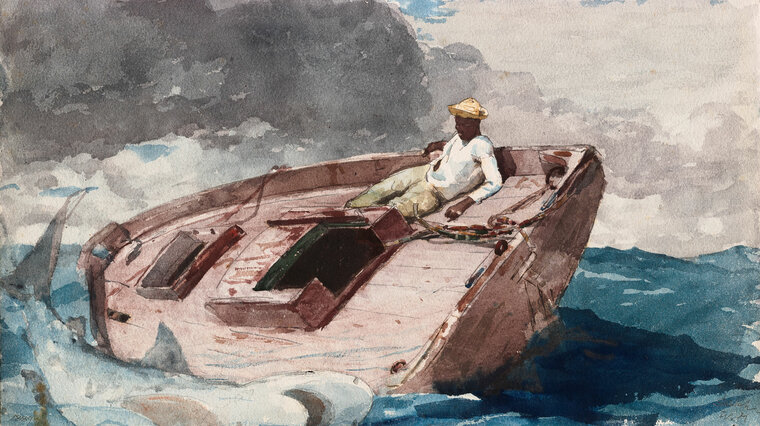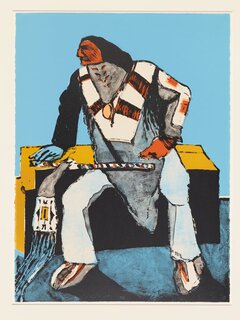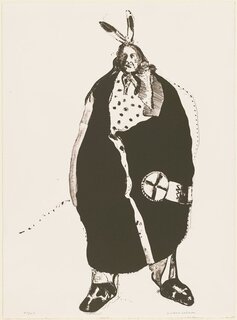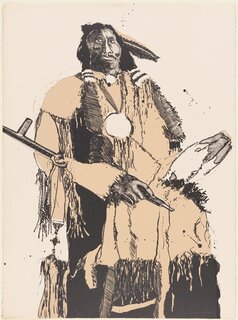
Homer’s exploration of life and death in the tropics found ultimate expression in his oil painting The Gulf Stream painted at Prout’s Neck following his return from the Bahamas. A group of four watercolors documents the evolution of this terrifying seascape, which details the plight of a solitary black man, adrift in stormy seas on a broken boat and encircled by a school of aggressive requiem sharks. In early 1885, on his first trip to the Bahamas, Homer had painted Shark Fishing which depicts two fishermen controlling a hooked shark that struggles, mouth open, in the immediate foreground. On this same trip, the artist executed a similar subject, Sharks (The Derelict). In this work, an unmanned wooden boat, broken-masted and taking on water, is under attack by at least three large, circling animals. The fact that the boat is empty leaves the viewer to wonder if the worst has already happened.
Homer’s 1898 voyage to the Bahamas must have reminded him of these works, suggesting the idea for his next major painting. Either in Nassau, or more likely after he returned to Prout’s Neck, he developed the theme in two watercolors. One is Study for “The Gulf Stream”, a detailed view of the bow of the derelict boat that corresponds closely to the final painting. In the work, the artist trimmed a horizontal sheet into a vertical format and filled it nearly to the top with churning waves. In the Art Institute’s watercolor study The Gulf Stream, Homer positioned the shark so that it appears to swim over the submerged side of the boat. It is probable that he painted this work in his Prout’s Neck studio, where he would have been able to refer to the studies from 1885. He trimmed the bottom of The Gulf Stream sheet, forcing the belly of the shark right up against the picture plane. In both this watercolor and in the finished painting, the impassive (or dazed) expression of the castaway and his surprisingly relaxed (or resigned) pose imbue the subject with ambiguity.




